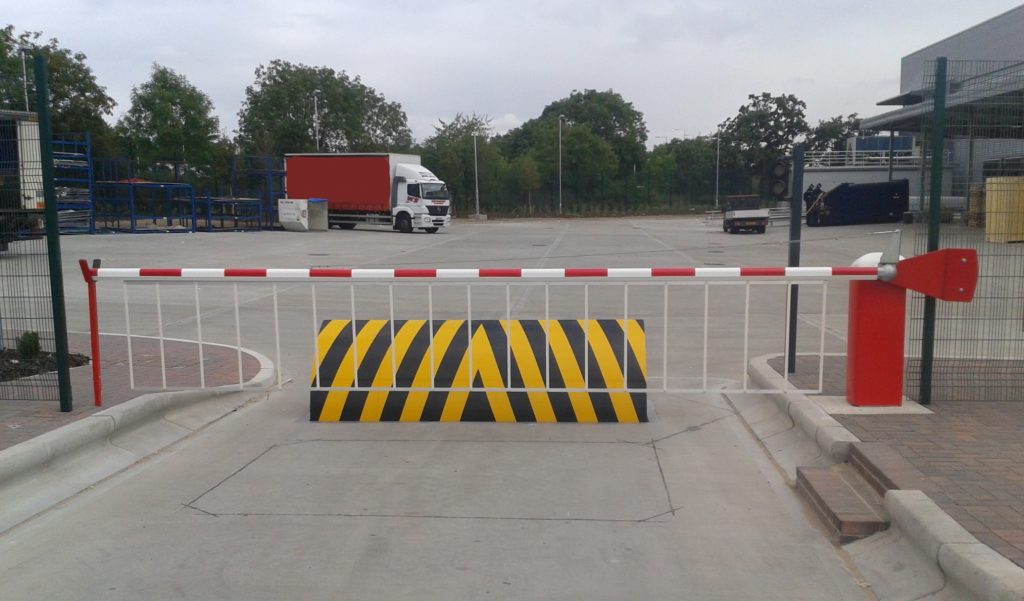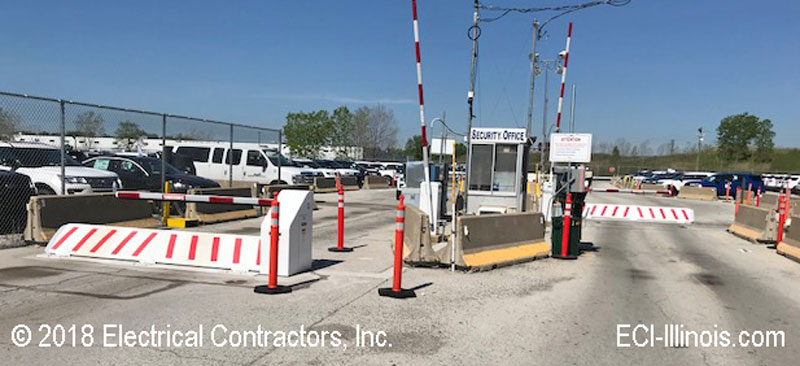Rumored Buzz on Wedge Barriers
3 Simple Techniques For Wedge Barriers
Table of ContentsLittle Known Facts About Wedge Barriers.Wedge Barriers - Questions

Wedge Barriers Fundamentals Explained
g., springtime support 65 )may be taken care of to the end of the springtime pole 58 to allow compression of the springs 60. As the springtimes 60 are pressed in between the springtime sustains 62, the springtime setting up 54 generates a force acting upon the web cam combined to the springtime pole 58 in an instructions 66. For instance, the remaining force used to
the web cam to deploy the wedge plate 16 might be provided by an electromechanical actuator 84 or various other actuator. The spring setting up 54 and the actuator 84(e. g., electromechanical actuator)may run together to translate the webcam and lift the wedge plate 16.
As discussed over, the spring setting up 54 exerts a constant pressure on the cam, while the electromechanical actuator might be regulated to exert a variable pressure on the webcam, therefore enabling the training and decreasing( i. e., releasing and retracting )of the wedge plate 16. In certain personifications, the constant force used by the spring assembly 54 may be adjustable. g., electromechanical actuator) is disabled. As will be valued, the springtime setting up 54 may be covered and protected from particles or various other components by a cover plate(e. g., cover plate 68 received FIG. 4) that may be significantly flush with the raised surface 38 of the foundation 14. As discussed over, in the released placement, the wedge plate 16 serves to obstruct access or travel beyond the obstacle 10. For example, the barrier 10(e. g., the wedge plate 16 )might block pedestrians or lorries from accessing a residential property or pathway. As reviewed over, the barrier 10 is connected to important source the support 30 safeguarded within the structure 14,

front brackets 71. As an outcome, the affiliation assemblies 72 may pivot and revolve to make it possible for the collapse and extension of the link assemblies 72 throughout retraction and release of the bather 10. The affiliation settings up 72 cause activity of the wedge plate 16 to be limited. For example, if a car is taking a trip towards the deployed wedge plate 16(e. For instance, in one situation, the security legs 86 might be prolonged duringupkeep of the barrier 10. When the security legs 86 are released, the security legs 86 support the weight of the wedge plate 16 against the surface area 12. Therefore, the lifting system 50 might be shut off, serviced, removed, changed, and so forth. FIG. 5 is partial viewpoint sight of a personification of the surface-mounted wedge-style barrier 10, illustrating the visit their website web cam 80 and the webcam surfaces 82 of the lifting system 50. Specifically, 2 cam surfaces 82, which are referred to as lower cam surfaces 83, are placed below the camera 80. The reduced webcam surfaces 83 might be taken care of to the surface area 12 (e. For instance, the reduced webcam surface areas 83 and the mounting plate 85 might develop a solitary item that is secured to the support 30 by screws or other mechanical bolts. Furthermore, 2 webcam surface areas 82, which are described as top web cam surface areas 87, are placed over the web cam 80 and combined to (e. In other personifications, interfering layers or plates may be placed in between the surface 12 and the reduced camera surfaces 83 and/or the wedge plate 16 and the upper camera surfaces 87 As mentioned over, the webcam
80 translates along the webcam surfaces 82 when the wedge plate 16 is lifted from the withdrawed setting to the deployed placement. Additionally, as mentioned over, the spring setting up 54 (see FIG. 3 )may provide a pressure acting on the cam 80 in the instructions 102 using springtime rod 58, which might lower the force the electromechanical actuator 84 is required to apply important source to the webcam 80 in order to actuate and raise the wedge plate 16. 1 )to the released setting(see FIG. 4). As shown, the webcam 80 consists of track wheels 104(e. g., rollers), which call and convert along the camera surface areas 82 throughout operation.